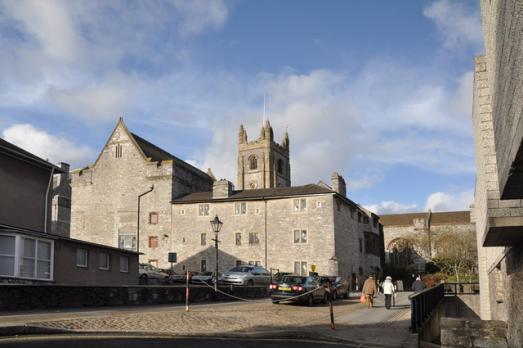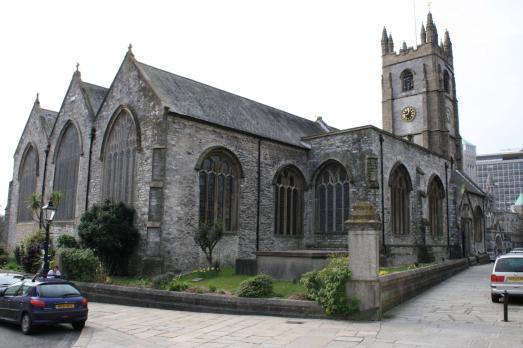In the middle of the 8th century a party of Christian colonisers sailed into Sutton Harbour, set their farm a short distance upstream and built their church on a ridge to the west of the farmhouse. For more than 1,200 years the church has stood at the heart of the community and has witnessed wars, rebellions, pillage, destruction, reformation, restoration and reconsecration; been favoured by kings, queens and princesses; welcomed voyagers and heroes of the sea; suffered conflict and plague; and been served by illustrious ministers, devoted musicians and dedicated parishioners. Throughout these many centuries St Andrew's has served the people as a place of sanctity, stability and continuity.
The first Saxon church, dedicated to St Andrew, the patron saint of fishermen, was probably a low, wooden building, hidden behind Plymouth Hoe and out of sight of marauding pirates. The church was served by itinerant priests until 1087 when the first vicar, Elpheage, was appointed. In 1121 the Normans gave the parish to the canons at Plympton Priory who built the first stone church in about 1170 and retained the patronage of St. Andrew’s for the next four centuries.
The church grew from its original, simple cruciform shape after 1385 when firstly two chapels were built, followed by two aisles and two transepts, then finally the tower which was completed in about 1490. Thus was constructed the typical, rectangular west country hall preaching church. The Yogge family, wealthy local merchants, contributed to the cost of the development and subsequently build the Old Abbey, today called the Prysten House, to live in. A survey in 1956 revealed evidence of 12th century stonework retained within the structure of the church.
The outward appearance of the church remains much the same today as it was in 1500. The interior changed gradually during the Reformation and the Commonwealth but the so called restoration of 1826 left the church a shadow of its former self. Much of the old woodwork had been destroyed, including the finely carved screen. In 1875 a careful restoration by Sir Gilbert Scott improved the interior with the removal of the galleries, the high pews and the opening up of the tower arch.
In the blitz of 1941 the church was burnt out and left a roofless shell. Later a board bearing the word 'RESURGAM' or 'I will rise again' appeared over the north door, the sign remains there to this day. In 1943 rubble was cleared from the main body of the church, lawns were laid and areas planted as flower beds. A covered table was erected at the east end and St Andrew's became famous as the 'garden church' where, for six years, thousands worshipped at the open air services. Princess Elizabeth visited the church in 1949 and unveiled a tablet to mark the beginning of the reconstruction. In 1957, rebuilt, redesigned internally but still essentially the church created in the 15th century, the church was reconsecrated.
In 2009 St Andrew's was awarded the status of Minster in celebration of the significance of the city in the life of the diocese and in recognition of the historic role of St Andrew's as a place of worship and mission for the city.




